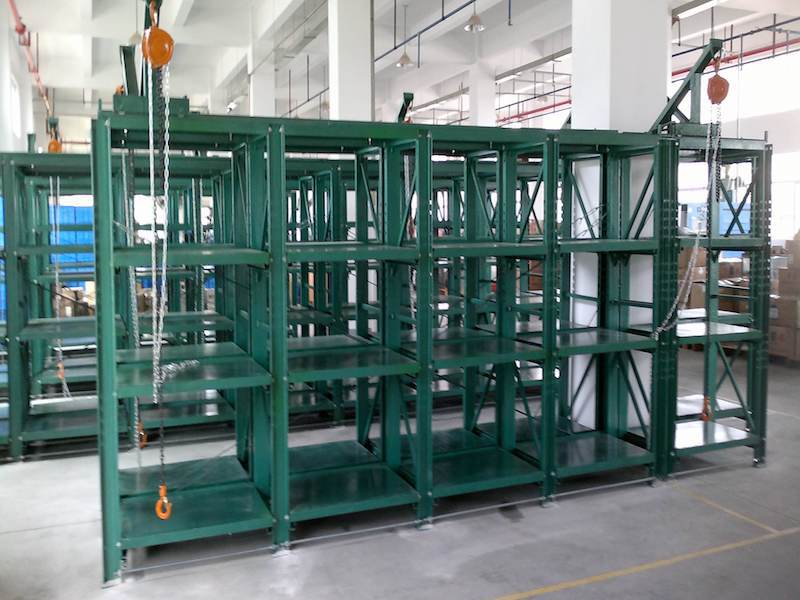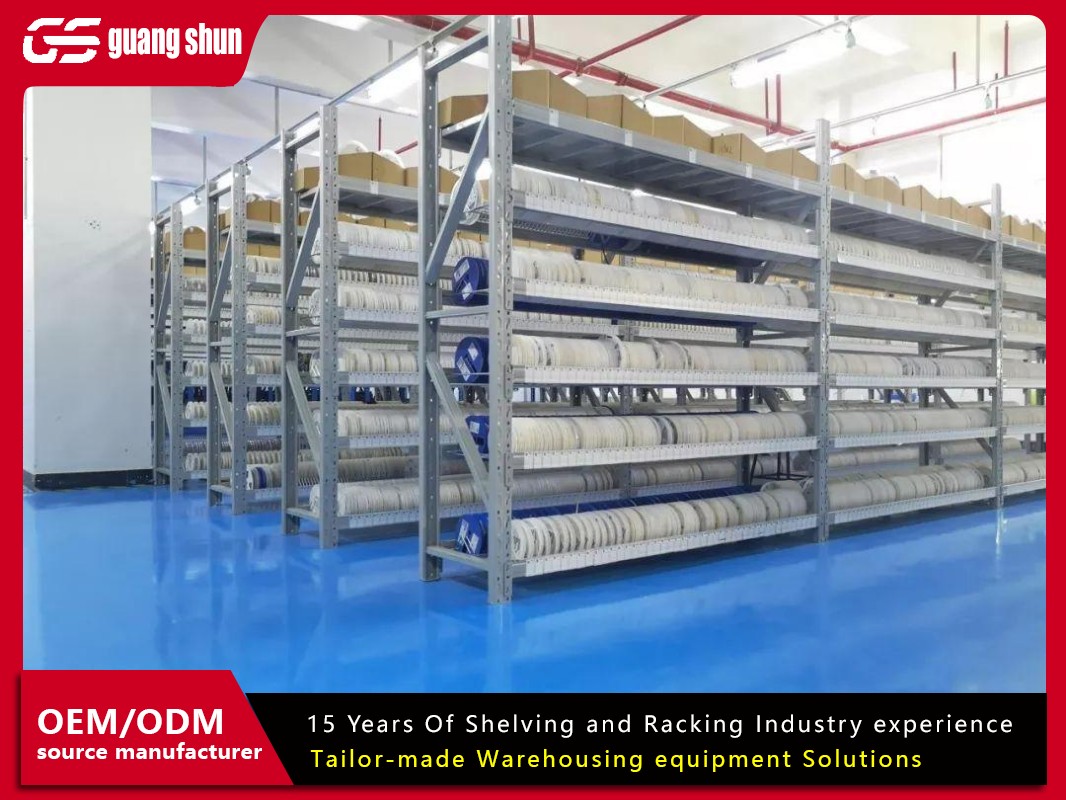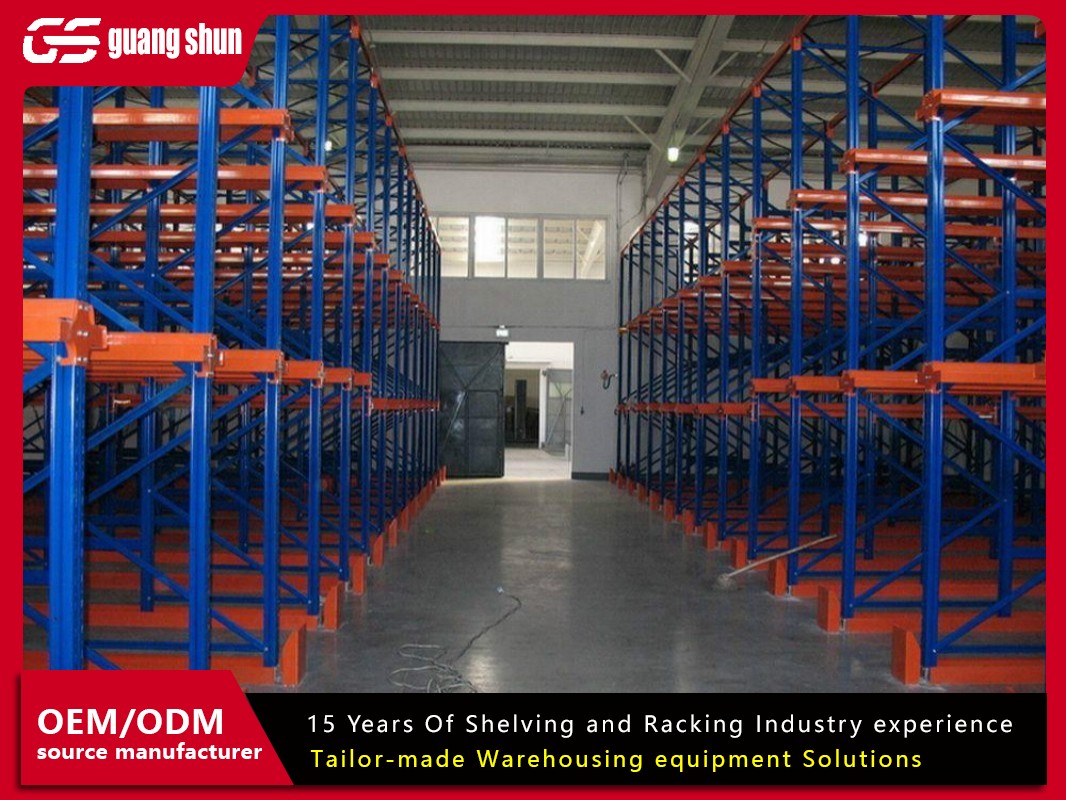In the fast-paced world of logistics, manufacturing, and distribution, maximizing space and streamlining operations isn't just advantageous – it's essential for survival and growth. At the heart of efficient warehouse and industrial facility management lies a critical component: industrial racking systems. These engineered structures are far more than simple metal shelves; they are the foundational framework that enables organized storage, safe material handling, optimal space utilization, and ultimately, enhanced productivity. This comprehensive guide delves deep into the world of industrial racking systems, exploring their various types, undeniable benefits, key selection factors, critical safety considerations, and emerging trends shaping their future.

1. Understanding Industrial Racking Systems: The Backbone of Storage
Industrial racking systems are purpose-built structures designed to store materials, palletized goods, and products in a safe, organized, and space-efficient manner within warehouses, distribution centers, manufacturing plants, and retail backrooms. Unlike standard shelving, these systems are engineered to handle significant weight capacities, withstand the rigors of forklift traffic, and adapt to diverse inventory profiles.
The core purpose of any industrial racking system is to transform vertical space – often the most underutilized asset in a facility – into accessible, high-density storage. By stacking goods vertically, businesses dramatically increase their storage capacity without expanding their physical footprint, leading to substantial cost savings. Furthermore, these systems provide structure, enabling systematic organization based on factors like SKU, turnover rate (FIFO or LIFO), or product dimensions. This organization is crucial for efficient order picking, inventory control, and overall operational flow. Modern industrial racking systems are modular, offering flexibility for reconfiguration as storage needs evolve. They form the literal backbone upon which efficient material handling processes are built, integrating seamlessly with equipment like forklifts, pallet jacks, and increasingly, automated guided vehicles (AGVs) and robotic retrieval systems.
2. Exploring the Diverse Types of Industrial Racking Systems
No single industrial racking system fits all needs. The optimal choice depends heavily on the specific characteristics of the stored goods, operational workflows, and facility constraints. Here are the most prevalent types:
•Selective Pallet Racking: The undisputed workhorse of warehouses, selective racking offers direct access to every single pallet position. Pallets are typically stored one deep on horizontal load beams. Its key advantage is 100% accessibility, making it ideal for facilities with a vast number of SKUs or where every pallet needs frequent picking. While highly flexible and relatively easy to install, it offers lower storage density compared to some other systems. It's the most common industrial racking system globally.
•Drive-In/Drive-Thru Racking: Designed for high-density storage of large quantities of homogeneous products. Forklifts drive directly into the rack structure to deposit or retrieve pallets, which are stored multiple-deep on rails. Drive-In (last-in, first-out - LIFO) has an entrance at one end only. Drive-Thru (first-in, first-out - FIFO) has entrances at both ends. This industrial racking system maximizes cube utilization but sacrifices selective access, as pallets behind the front one must be moved first. Ideal for cold storage or bulk items with low SKU counts.
•Push Back Racking: A popular high-density LIFO system utilizing inclined carts on nested rails. Pallets are loaded from the front; each new pallet "pushes back" the one(s) behind it. When retrieving a pallet, the remaining ones automatically roll forward. It typically offers 2-6 pallets deep storage per lane. This industrial racking system provides better selectivity than drive-in while achieving significant density gains over selective racking. Well-suited for medium-turnover products with multiple SKUs per lane.
•Pallet Flow Racking: A high-density FIFO system leveraging gravity. Pallets are loaded onto an inclined rail system at the high end and flow smoothly towards the picking face at the low end. Rollers or wheels embedded in the rails facilitate movement. This industrial racking system is excellent for high-turnover, homogeneous products requiring strict FIFO rotation (e.g., perishables, beverages, batch-managed goods). Offers excellent space utilization and rapid pallet movement.
•Cantilever Racking: Specifically engineered for long, bulky, or irregularly shaped items that don't fit on standard pallet racking. Features long horizontal arms (cantilevers) mounted on robust vertical columns. Items like lumber, pipes, furniture, carpet rolls, or sheet metal are stored by being placed across the arms. This specialized industrial racking system provides unobstructed access along the length of the stored item.
•Mobile Pallet Racking (Mobile Aisles): An innovative solution where entire rows of racking are mounted on electrically powered bases that move laterally on floor rails. Only one aisle is opened at a time for access, while others remain closed. This industrial racking system can achieve space savings of 50% or more compared to static selective racking by eliminating multiple fixed aisles. Ideal for archives, cold storage, or facilities with extremely high land/rental costs. Requires a specialized operating environment.

3. The Compelling Benefits of Implementing Industrial Racking Systems
Investing in the right industrial racking system delivers a multitude of tangible and strategic advantages:
•Maximized Storage Density & Space Utilization: This is the most fundamental benefit. By efficiently utilizing vertical space, industrial racking systems dramatically increase storage capacity within the existing building footprint. High-density systems like drive-in, push back, and pallet flow achieve even greater gains. This directly translates to deferred expansion costs or avoidance of costly off-site storage.
•Enhanced Organization & Inventory Control: A well-designed industrial racking system provides a structured framework for organizing inventory logically. This makes it significantly easier to locate items, conduct accurate cycle counts, implement inventory management systems (WMS), and maintain overall control. Reduced search times and fewer errors are direct results.
•Improved Operational Efficiency & Productivity: Organized storage directly accelerates material handling processes. Forklift operators can navigate aisles quickly and locate pallets effortlessly. Order pickers spend less time searching and more time picking. Efficient workflows enabled by the industrial racking system layout (e.g., zoning, pick paths) lead to faster order fulfillment, reduced labor costs, and higher throughput.
•Increased Safety: Properly engineered and installed industrial racking systems significantly enhance warehouse safety compared to floor stacking or inadequate shelving. They prevent product collapse, provide clear aisles for equipment movement, and incorporate safety features like column guards, end-of-aisle protectors, and wire mesh decking. Compliance with safety standards (OSHA, SEMA, EN) is inherent in quality systems.
•Flexibility & Scalability: Modular industrial racking systems are inherently adaptable. As inventory profiles, volumes, or operational needs change, rack configurations can be easily modified – beams can be relocated, sections can be added or reconfigured, and even system types can be integrated. This future-proofs the investment.
•Protection of Goods: Goods stored within a proper industrial racking system are elevated off the floor, protecting them from potential water damage, dirt, and pests. Systems can also incorporate accessories like rack protectors, pallet supports, and containment nets to prevent damage from handling or falling items.
•Optimized Facility Costs: By maximizing space utilization, reducing labor requirements, minimizing product damage, and improving overall efficiency, industrial racking systems contribute significantly to lowering the total cost of warehouse operations and improving the bottom line.
4. Critical Factors for Selecting the Right Industrial Racking System
Choosing the optimal industrial racking system is a complex decision requiring careful analysis of numerous factors:
•Inventory Characteristics: This is paramount. Analyze pallet/load dimensions (width, depth, height), weight per pallet/unit load, load stability (e.g., need for support beams or decking), product type (homogeneous vs. diverse SKUs), and required rotation method (FIFO, LIFO, or random access).
•Operational Requirements: Determine picking methodologies (case picking, pallet picking, piece picking), required throughput rates, the type and reach of material handling equipment used (forklift clearances, AGV compatibility), and the desired number of access points.
•Facility Constraints: Precisely measure available space, including clear ceiling height (crucial for vertical storage), floor conditions and load-bearing capacity, column locations and spacing, door positions, and sprinkler system layouts. Consider future expansion potential.
•Storage Density vs. Accessibility Needs: This is a key trade-off. High-density systems (Drive-In, Push Back, Pallet Flow) maximize space but limit immediate access to all pallets. Selective racking offers full accessibility but uses more space per pallet. The choice depends on inventory turnover and SKU profile.
•Budget Considerations: Evaluate not just the initial purchase and installation cost of the industrial racking system, but also long-term factors like maintenance, potential reconfiguration costs, durability, and the total cost of ownership (including operational efficiency gains).
•Safety & Compliance: Ensure the chosen system meets or exceeds all relevant local and national safety standards (e.g., OSHA 1910.176(b), SEMA Codes of Practice, EN 15620/15635 in Europe). Consider seismic requirements if applicable. Factor in the cost of necessary safety accessories.
5. Ensuring Safety and Compliance with Industrial Racking Systems
Safety is non-negotiable when dealing with industrial racking systems. These structures bear immense loads, and failure can lead to catastrophic accidents, injuries, fatalities, and significant property damage. Key safety principles include:
•Professional Design & Installation: Industrial racking systems must be designed by qualified engineers considering all loads (static, dynamic, seismic) and installed strictly according to manufacturer specifications and industry standards (SEMA, RMI, FEM). Never modify racks without engineering approval.
•Regular Inspections: Implement a rigorous inspection program. Trained personnel should conduct frequent visual inspections (daily/weekly by staff) and periodic comprehensive inspections (at least annually by a competent person or SEMA Approved Rack Inspector - SARI). Document all inspections and findings.
•Load Capacity Awareness: NEVER exceed the specified load capacities for beams, frames, or decks. Load capacities must be clearly marked on the racking. Ensure loads are stable, centered, and properly supported. Use appropriate pallets and consider decking for small items or unstable loads.
•Damage Prevention & Management: Forklift collisions are a major cause of rack damage. Implement strict traffic management rules, use high-visibility column guards, end-of-aisle protectors, and wheel guards. Train operators thoroughly. Any damage (bent uprights, cracked welds, deformed beams) must be assessed immediately. Damaged components must be unloaded promptly and repaired or replaced by qualified personnel using genuine parts. Establish a clear "red tag" system for damaged racks.
•Proper Use & Maintenance: Ensure the industrial racking system is used only for its intended purpose. Do not climb on racks; use approved ladders or order pickers. Keep aisles clear. Follow all manufacturer's guidelines for use and maintenance. Periodically check for loose bolts and connections.
6. Installation, Maintenance, and Future-Proofing Your Investment
The lifecycle of an industrial racking system extends far beyond the initial purchase:
•Professional Installation: Correct installation is critical for safety and performance. Always use experienced, certified installers familiar with the specific system and local regulations. They ensure proper anchoring, alignment, and load capacity verification.
•Ongoing Maintenance: Regular maintenance is essential. This includes:Periodic re-torquing of bolts (as specified by manufacturer/inspector).Prompt repair or replacement of damaged components only with manufacturer-approved parts.Keeping the system clean and free of debris.Regularly verifying load capacity signage is present and legible.
•Reconfiguration & Expansion: One of the key advantages of modular industrial racking systems is adaptability. As needs change, systems can often be reconfigured – aisles widened or narrowed, sections added or removed, beam levels adjusted, or even different system types integrated (e.g., selective with a push back section). Plan for future flexibility during the initial design phase.
•Integration with Automation & Technology: The future of warehousing is increasingly automated. When selecting an industrial racking system, consider compatibility with emerging technologies:Automated Storage and Retrieval Systems (AS/RS): Require racks designed to very precise tolerances for robotic interfaces.Automated Guided Vehicles (AGVs)/Autonomous Mobile Robots (AMRs): Need clear, consistent aisle widths and potentially specialized rack interfaces for pallet pickup/deposit.Warehouse Management Systems (WMS): Rack locations are integral to WMS functionality. Ensure the racking layout supports efficient system-directed putaway and picking.Inventory Drones: May require specific clearances above racks for scanning.
Industrial racking systems are far more than static storage; they are dynamic, strategic assets that directly impact a facility's efficiency, safety, capacity, and profitability. Selecting, installing, and maintaining the right system requires careful consideration of inventory, operations, space, budget, and safety. From the ubiquitous selective racking to high-density drive-in or push-back systems, and specialized cantilever solutions, there is an optimal industrial racking system configuration for virtually every application.
By understanding the diverse types, leveraging the significant benefits, meticulously evaluating selection factors, and prioritizing rigorous safety and maintenance protocols, businesses can transform their warehouse or industrial space into a model of efficiency and resilience. Investing in a well-designed industrial racking system, and integrating it thoughtfully with future automation trends, lays a robust foundation for operational excellence and sustainable growth in the competitive landscape of modern logistics and manufacturing.







